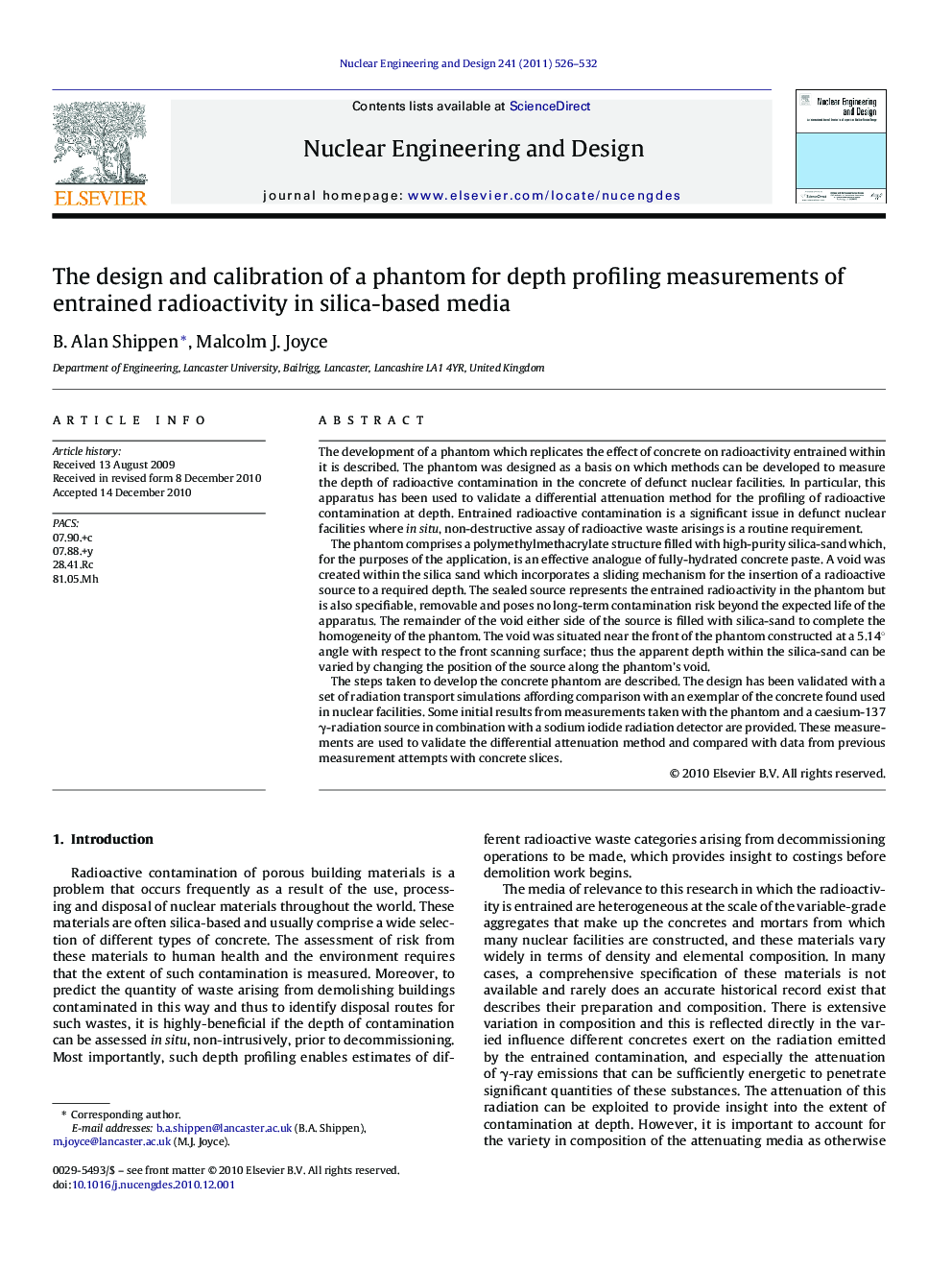| Article ID | Journal | Published Year | Pages | File Type |
|---|---|---|---|---|
| 298210 | Nuclear Engineering and Design | 2011 | 7 Pages |
The development of a phantom which replicates the effect of concrete on radioactivity entrained within it is described. The phantom was designed as a basis on which methods can be developed to measure the depth of radioactive contamination in the concrete of defunct nuclear facilities. In particular, this apparatus has been used to validate a differential attenuation method for the profiling of radioactive contamination at depth. Entrained radioactive contamination is a significant issue in defunct nuclear facilities where in situ, non-destructive assay of radioactive waste arisings is a routine requirement.The phantom comprises a polymethylmethacrylate structure filled with high-purity silica-sand which, for the purposes of the application, is an effective analogue of fully-hydrated concrete paste. A void was created within the silica sand which incorporates a sliding mechanism for the insertion of a radioactive source to a required depth. The sealed source represents the entrained radioactivity in the phantom but is also specifiable, removable and poses no long-term contamination risk beyond the expected life of the apparatus. The remainder of the void either side of the source is filled with silica-sand to complete the homogeneity of the phantom. The void was situated near the front of the phantom constructed at a 5.14° angle with respect to the front scanning surface; thus the apparent depth within the silica-sand can be varied by changing the position of the source along the phantom's void.The steps taken to develop the concrete phantom are described. The design has been validated with a set of radiation transport simulations affording comparison with an exemplar of the concrete found used in nuclear facilities. Some initial results from measurements taken with the phantom and a caesium-137 γ-radiation source in combination with a sodium iodide radiation detector are provided. These measurements are used to validate the differential attenuation method and compared with data from previous measurement attempts with concrete slices.
Research highlights▶ The successful development of a concrete phantom using silica sand. ▶ Sub millimetre positional accuracy. ▶ Supporting simulation results. ▶ Increased usability and repeatability over standard methods.
